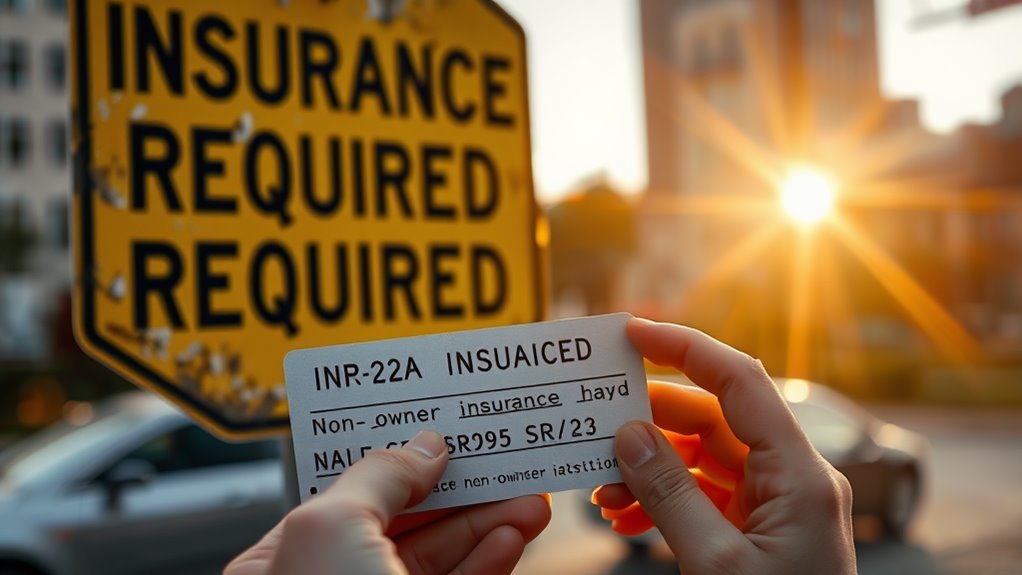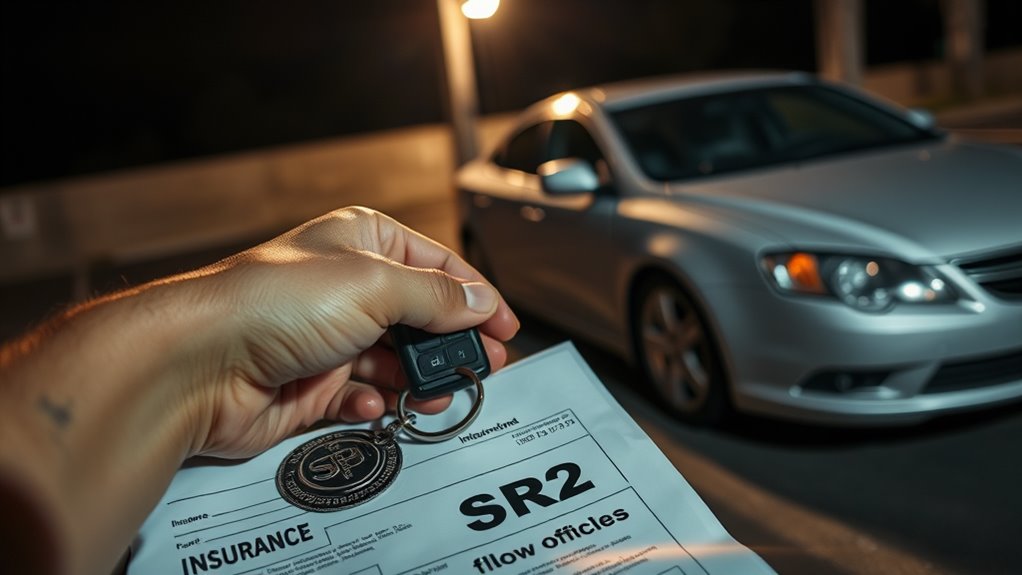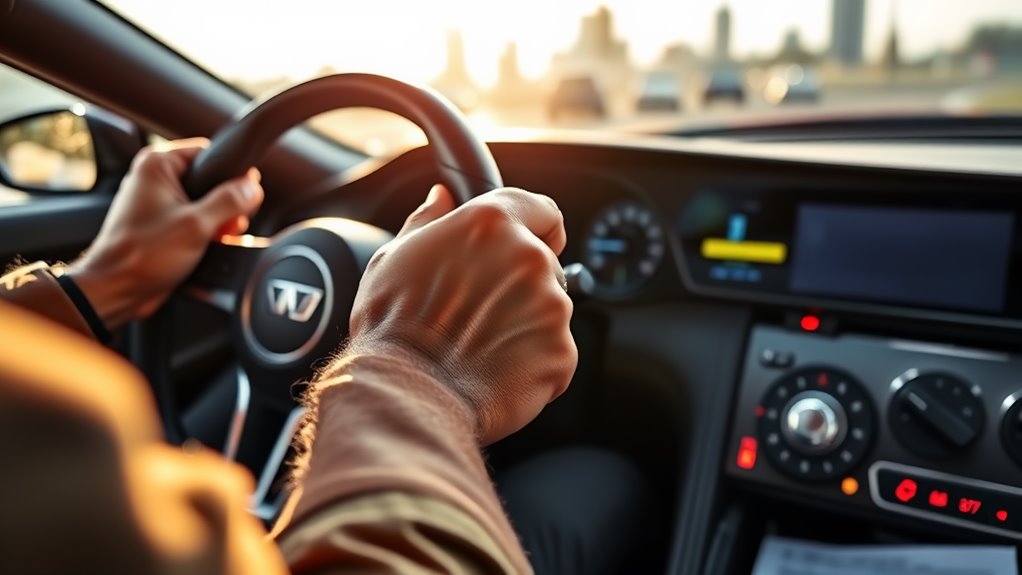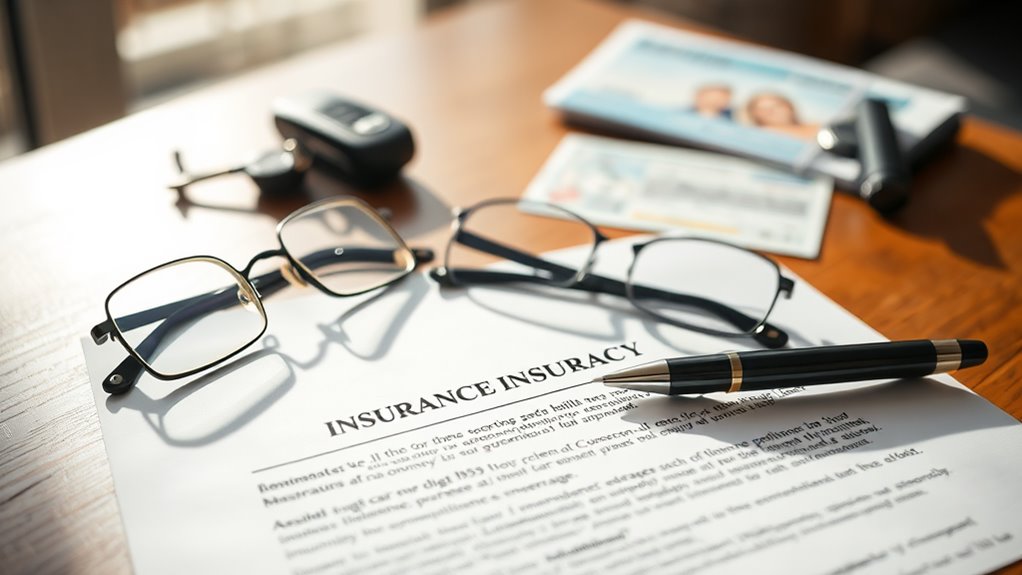Did you know that nearly one in five drivers in the U.S. is considered high-risk due to factors like prior accidents or traffic violations? For these individuals, understanding non-owner SR-22 insurance requirements is vital to maintaining legal driving status and managing costs. You'll want to explore the essential coverage options that can protect you while ensuring compliance. Knowing what to look for can make all the difference in your insurance journey.
Key Takeaways
- Non-owner SR-22 insurance provides essential liability coverage for high-risk drivers without vehicle ownership, aiding in license reinstatement.
- Minimum coverage typically includes liability for bodily injury, property damage, and may require uninsured/underinsured motorist coverage.
- Continuous coverage is crucial for maintaining compliance and avoiding higher premiums in the future, typically requiring a minimum of three years.
- Specialized insurers offer tailored solutions for high-risk drivers, ensuring more affordable and efficient policy options.
- Evaluating flexible terms and understanding state-specific requirements is vital for meeting non-owner insurance needs effectively.
Understanding Non-Owner SR-22 Insurance

When you find yourself needing to prove your insurance status but don't own a vehicle, understanding Non-Owner SR-22 insurance becomes vital. This type of insurance provides liability coverage for drivers who may need to operate borrowed or rented vehicles, particularly after serious driving offenses. It requires you to maintain the minimum state-mandated liability insurance, ensuring compliance for license reinstatement. Unlike traditional policies, Non-Owner SR-22 insurance often comes with lower costs due to infrequent vehicle use. Additionally, you can purchase a non-owner car insurance policy to meet your SR-22 requirements without needing to own a vehicle. This is especially beneficial for those with affordable SR-22 insurance options who may not regularly drive. However, maintaining this coverage is important; any lapse can lead to license revocation. Your provider will also handle the necessary SR-22 filings with the state, keeping you within legal requirements while driving others' vehicles.
Who Needs Non-Owner SR-22 Insurance?
Who exactly needs Non-Owner SR-22 insurance? If you fall into any of these categories, you might be required to obtain this insurance:
- Drivers with Suspended Licenses: If your license has been suspended due to serious traffic offenses, you'll need SR-22 to reinstate it.
- Individuals with DUIs/DWIs: A conviction for driving under the influence typically necessitates SR-22 insurance to demonstrate financial responsibility.
- Frequent Traffic Violators: Accumulating excessive points or having a history of significant violations can classify you as a high-risk driver, triggering the need for SR-22.
Understanding these requirements can help you navigate your insurance options effectively and guarantee compliance with state laws.
Key Benefits of Non-Owner SR-22 Insurance
While maneuvering through the complexities of driving regulations, understanding the key benefits of Non-Owner SR-22 insurance is vital for high-risk drivers.
Navigating driving regulations is crucial for high-risk drivers to grasp the benefits of Non-Owner SR-22 insurance.
This insurance guarantees compliance with state laws, keeping your license valid even without vehicle ownership. It's often more affordable than traditional policies, as it covers only liability, reducing overall costs.
You gain the flexibility to drive borrowed or rented vehicles while avoiding financial penalties for uninsured driving. Additionally, Non-Owner SR-22 insurance provides legal protection and helps restore your driving privileges after infractions.
With easy filing processes and minimal documentation, it simplifies compliance, allowing you to focus on maintaining your dignity and independence while fulfilling personal and professional obligations.
Minimum Coverage Requirements for Non-Owner Policies
Understanding the minimum coverage requirements for non-owner insurance policies is essential for high-risk drivers seeking compliance and protection.
Here are the key components you should know:
- Liability Coverage: This is a must-have, providing financial protection for bodily injury and property damage to others in an accident.
- Uninsured/Underinsured Motorist Coverage: This protects you if you're in an accident with a driver lacking insurance or with insufficient coverage.
- Personal Injury Protection (PIP): In some states, this covers medical expenses for you and your passengers.
Keep in mind that minimum liability coverage varies by state, and additional coverages like PIP might be mandatory in no-fault states.
Always verify your state's specific requirements to guarantee you're adequately protected.
How to Obtain Non-Owner SR-22 Insurance
To obtain non-owner SR-22 insurance, start by identifying insurance providers that specialize in policies for high-risk drivers.
Research companies that offer non-owner SR-22 coverage and compare their quotes and policy details. It's vital to contact insurance agents who can guide you through state-specific requirements and help customize your policy according to your situation.
You'll need to submit personal and driving history information to set up your policy. After receiving your policy, review the terms to guarantee it meets all necessary SR-22 requirements.
Finally, remember that maintaining continuous coverage is important for reinstating your driving privileges and avoiding potential consequences related to policy lapses.
Costs Associated With Non-Owner SR-22 Insurance
When you're considering non-owner SR-22 insurance, it's important to grasp the costs involved. Generally, you can expect the average annual premium to be around $576, which includes a one-time filing fee of $25-$30.
Here are a few key points to keep in mind:
- Non-owner SR-22 insurance is usually $165 cheaper annually than traditional SR-22 policies.
- Your costs can vary based on your driving history, location, and the insurer you choose.
- Some providers, like Auto-Owners Insurance Co, offer competitive rates starting at $381 annually.
Understanding these factors will help you make an informed decision and find a policy that fits your budget while meeting state requirements.
Maintaining Continuous Coverage With Non-Owner SR-22
Maintaining continuous coverage with non-owner SR-22 insurance is essential for high-risk drivers aiming to comply with state mandates and avoid penalties.
To fulfill this requirement, you must keep your insurance active without any lapses for the specified period, usually three years. Any gaps in coverage can lead to extended SR-22 obligations, complicating your situation further.
Your insurance provider is responsible for notifying the DMV if your policy lapses or is canceled, which means you need to stay proactive. Additionally, state-specific requirements vary, so it's vital to verify your obligations with local authorities.
Common Misconceptions About Non-Owner SR-22 Insurance
Many high-risk drivers hold misconceptions about Non-Owner SR-22 insurance, often leading to confusion and misinformation. Here are three common misconceptions you should be aware of:
Many high-risk drivers misunderstand Non-Owner SR-22 insurance, leading to confusion about its true nature and limitations.
- Separate Policy Confusion: Many think Non-Owner SR-22 is a standalone insurance policy. In reality, it's an endorsement to existing liability coverage.
- Driving Restrictions: Some believe that not owning a vehicle means you can drive any vehicle freely. This isn't true; Non-Owner SR-22 still has limitations on the vehicles you can drive.
- Coverage Scope: There's a misconception that it offers extensive or collision coverage. It primarily provides liability protection, not covering damages to vehicles you don't own.
Understanding these misconceptions can help you navigate your insurance needs more effectively.
Finding the Right Insurer for Non-Owner SR-22
Finding the right insurer for Non-Owner SR-22 insurance requires careful consideration of several key factors that can greatly impact your coverage and costs.
Start by researching insurers familiar with your state's SR-22 filing requirements and ensuring they can electronically file your forms. Obtain quotes from multiple providers to compare costs and coverage options, focusing on those experienced with high-risk drivers.
Customer reviews can reveal an insurer's reputation in handling non-owner SR-22 policies. Prioritize companies that offer flexible coverage terms and streamlined application processes.
Specialized insurers often provide tailored solutions and cost-effective options that meet state minimums, ensuring you comply without overspending. This careful approach will help you find the most suitable coverage for your needs.
The Impact of Non-Owner SR-22 on Future Insurance Rates
While carrying non-owner SR-22 insurance may seem like a temporary solution for high-risk drivers, it plays an essential role in shaping your future insurance rates. By maintaining continuous coverage, you can avoid rate increases due to gaps in insurance.
Here are three key impacts on your future rates:
- Prevent Higher Premiums: Continuous coverage through non-owner SR-22 can protect you from increased premiums following a policy cancellation.
- Compliance with State Laws: States often require a minimum coverage period, usually three years, which can influence your future rates.
- Clean Driving Record Benefits: If you maintain a clean driving record during your coverage, you may qualify for better rates when seeking new insurance.
Understanding these factors is vital for managing your long-term insurance costs effectively.
Conclusion
In maneuvering the complex waters of non-owner SR-22 insurance, you're not just ticking boxes; you're forging a path toward better driving habits and financial stability. Think of it as your personal insurance phoenix, rising from the ashes of past mistakes. By prioritizing coverage, maintaining continuous policies, and selecting the right insurer, you can transform your high-risk status into a stepping stone for lower future premiums and improved driving records. Embrace the journey to reclaiming your driving freedom.








